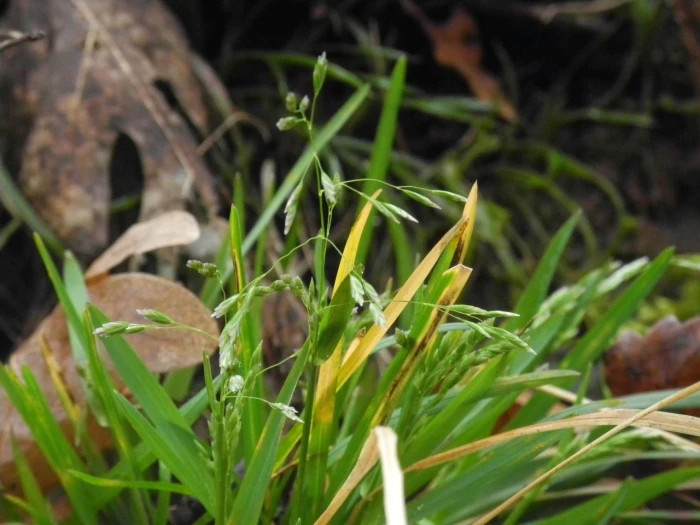Autumn Bluegrass
(Poa autumnalis)
Autumn Bluegrass (Poa autumnalis)
/
/

© Michael J. Papay
CC BY 4.0
Image By:
© Michael J. Papay
Recorded By:
Copyright:
CC BY 4.0
Copyright Notice:
Photo by: © Michael J. Papay | License Type: CC BY 4.0 | License URL: http://creativecommons.org/licenses/by/4.0/ | Uploader: mjpapay | Publisher: iNaturalist |

























Estimated Native Range
Climate Requirements for Perth, Australia
| This Plant | Your Site | Plant Suitability for Your Location | ||
|---|---|---|---|---|
| • Precipitation | 19" - 76" | 30" | Your precipitation may be insufficient for this plant. Irrigate N" / year. | Irrigate N" / year |
| • High Temp. | 75°F - 96°F | 88°F | Your summer temperatures are normal for this plant. | Excellent |
| • Low Temp. | -4°F - 44°F | 49°F | OK, but your winter temperatures are warmer than normal for this plant | OK |
This plant should grow well at your location with about N inches per year (Y minutes per month) of irrigation.
Summary
Poa autumnalis, commonly known as autumn bluegrass, is a perennial grass that is native to Central and Eastern USA. It typically inhabits meadows, open woodlands, and grassy slopes, thriving in cool, moist conditions. Autumn bluegrass reaches up to 2 feet in height and has a clumping growth habit with fine-textured, blue-green foliage that remains attractive throughout the growing season. The plant produces inconspicuous greenish flowers in the late summer to early fall.
Autumn bluegrass is valued for its adaptability to a variety of soil types and its tolerance of both drought and cold temperatures, making it a resilient choice for gardeners. It is commonly used in pasture mixes due to its palatability to livestock and is also suitable for erosion control on slopes and banks. In ornamental settings, it can be used as a ground cover or as part of a naturalistic planting scheme. For best results, autumn bluegrass should be grown in full sun to part shade and in well-drained soil. It may require additional watering during prolonged dry spells.CC BY-SA 4.0
Autumn bluegrass is valued for its adaptability to a variety of soil types and its tolerance of both drought and cold temperatures, making it a resilient choice for gardeners. It is commonly used in pasture mixes due to its palatability to livestock and is also suitable for erosion control on slopes and banks. In ornamental settings, it can be used as a ground cover or as part of a naturalistic planting scheme. For best results, autumn bluegrass should be grown in full sun to part shade and in well-drained soil. It may require additional watering during prolonged dry spells.CC BY-SA 4.0
Plant Description
- Plant Type: Grass
- Height: 0.5-1.5 feet
- Width: 0.5-1 feet
- Growth Rate: Moderate
- Flower Color: N/A
- Flowering Season: Spring
- Leaf Retention: Deciduous
Growth Requirements
- Sun: Full Sun, Part Shade
- Water: Medium
- Drainage: Fast, Medium
Common Uses
Deer Resistant, Drought Tolerant, Low Maintenance, Rock Garden
Natural Habitat
Temperate meadows, open woodlands, and grassy slopes
Other Names
Common Names: Fall Bluegrass
Scientific Names: Poa autumnalis , Poa campyle , Poa elliottii , Poa flexuosa , Poa hexantha , Poa vestita , Poa vestita
GBIF Accepted Name: Poa autumnalis